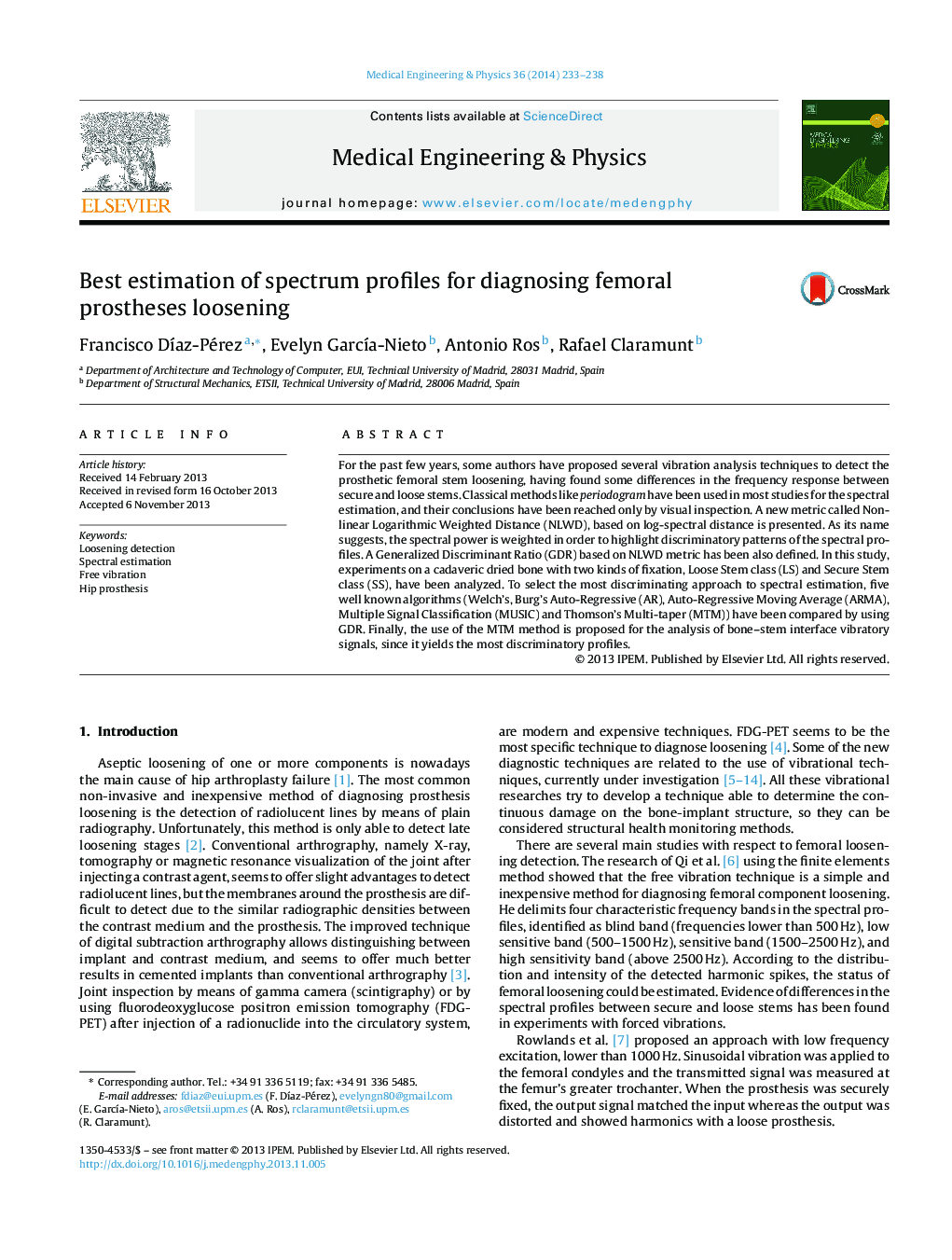| Article ID | Journal | Published Year | Pages | File Type |
|---|---|---|---|---|
| 876003 | Medical Engineering & Physics | 2014 | 6 Pages |
For the past few years, some authors have proposed several vibration analysis techniques to detect the prosthetic femoral stem loosening, having found some differences in the frequency response between secure and loose stems. Classical methods like periodogram have been used in most studies for the spectral estimation, and their conclusions have been reached only by visual inspection. A new metric called Non-linear Logarithmic Weighted Distance (NLWD), based on log-spectral distance is presented. As its name suggests, the spectral power is weighted in order to highlight discriminatory patterns of the spectral profiles. A Generalized Discriminant Ratio (GDR) based on NLWD metric has been also defined. In this study, experiments on a cadaveric dried bone with two kinds of fixation, Loose Stem class (LS) and Secure Stem class (SS), have been analyzed. To select the most discriminating approach to spectral estimation, five well known algorithms (Welch's, Burg's Auto-Regressive (AR), Auto-Regressive Moving Average (ARMA), Multiple Signal Classification (MUSIC) and Thomson's Multi-taper (MTM)) have been compared by using GDR. Finally, the use of the MTM method is proposed for the analysis of bone–stem interface vibratory signals, since it yields the most discriminatory profiles.
